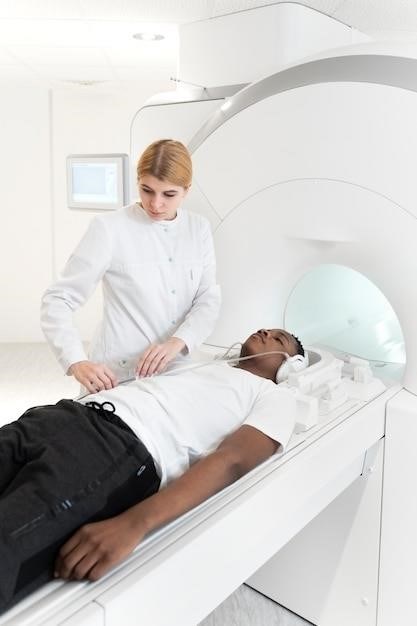CPT Codes for CT-Guided Kidney Biopsy
Accurate CPT coding for CT-guided kidney biopsies is crucial for proper billing and reimbursement. The primary codes typically involved are 50200 (renal biopsy) and 77012 (computed tomography guidance). Additional codes may be necessary depending on the complexity and specifics of the procedure. Precise documentation is essential to ensure accurate claim processing and avoid potential payment delays or denials.
A kidney biopsy is a minimally invasive medical procedure used to obtain a small tissue sample from the kidney for diagnostic purposes. This procedure is vital in evaluating various kidney diseases‚ including glomerulonephritis‚ interstitial nephritis‚ and vasculitis. The obtained tissue sample undergoes microscopic examination by a pathologist to identify the underlying cause of kidney dysfunction or damage. There are several approaches to performing a kidney biopsy‚ including percutaneous needle biopsy‚ which is the most common method. This involves inserting a thin needle into the kidney under imaging guidance‚ typically ultrasound or CT scan. The choice of imaging modality depends on several factors‚ including patient anatomy and the location of the targeted area within the kidney. The procedure is generally well-tolerated‚ although potential complications such as bleeding and infection can occur‚ necessitating careful pre- and post-procedure management.

CPT Code 50200⁚ Renal Biopsy
CPT code 50200‚ as maintained by the American Medical Association‚ specifically designates “Renal biopsy; percutaneous‚ by trocar or needle.” This code encompasses the core procedure of obtaining a kidney tissue sample via a percutaneous approach using a needle or trocar. The description highlights the method of access—percutaneous‚ meaning through the skin—and the instruments used for tissue acquisition. It’s crucial to understand that 50200 solely represents the renal biopsy itself; it doesn’t include any imaging guidance or other ancillary services. The code’s application is straightforward when a renal biopsy is the sole procedure performed; However‚ when imaging guidance (like CT) is utilized‚ an additional code‚ such as 77012 for CT guidance‚ must be appended to accurately reflect the complete service provided. Failing to include necessary codes can lead to underbilling and financial losses for healthcare providers.
CPT Code 77012⁚ Computed Tomography Guidance
CPT code 77012‚ also from the American Medical Association’s Current Procedural Terminology‚ describes “Computed tomography (CT) guidance‚ supervision and interpretation.” This code is specifically for the physician’s role in utilizing CT imaging to guide a separate‚ reportable procedure. It’s crucial to remember that 77012 is not a stand-alone code; it always accompanies another code representing the primary procedure being guided. In the context of a CT-guided kidney biopsy‚ code 77012 is added alongside code 50200 (renal biopsy) to accurately reflect the use of CT technology to precisely position the biopsy needle. The physician’s responsibility includes not only supervising the technical aspects of the CT scan but also interpreting the images to ensure accurate needle placement and successful biopsy sample acquisition. The precise and appropriate use of 77012 is critical for proper billing. Incorrect or incomplete coding can significantly impact reimbursement and potentially lead to claim denials. Accurate documentation is therefore essential.
Combined Coding for CT-Guided Renal Biopsy
For a CT-guided renal biopsy‚ proper coding requires combining the codes for the biopsy itself and the image guidance. The primary procedure is represented by CPT code 50200‚ which describes a percutaneous renal biopsy. This code encompasses the physician’s work in performing the biopsy‚ including needle insertion‚ sample collection‚ and wound closure. However‚ the procedure’s success heavily relies on CT guidance‚ which is separately reported using CPT code 77012. This code accounts for the physician’s supervision and interpretation of the CT images to guide the needle placement. Therefore‚ for a complete and accurate claim‚ both 50200 and 77012 must be reported together. This dual coding accurately reflects the distinct yet integral roles of the biopsy and image guidance in the overall procedure. Failure to include both codes might lead to underpayment or claim rejection‚ emphasizing the importance of precise coding practices to ensure appropriate reimbursement. Understanding the specific components of the procedure is vital for correct billing.

Additional Charges and Considerations
Beyond the primary CPT codes for the biopsy (50200) and CT guidance (77012)‚ several additional charges might apply to a CT-guided renal biopsy. These supplementary charges depend on the specific circumstances of the procedure and the facility’s billing practices. For instance‚ the administration of anesthesia‚ if required‚ would necessitate a separate anesthesia code. Similarly‚ if any complications arise during the procedure‚ necessitating additional interventions or procedures‚ those would also require additional coding. The use of specialized equipment or materials‚ such as specific biopsy needles or contrast agents‚ might also attract additional charges. Furthermore‚ the interpretation and reporting of the post-procedure CT scan‚ if performed‚ might warrant an additional radiology interpretation code. It’s important to note that professional and technical components of the procedure may be billed separately‚ depending on the healthcare provider’s billing structure. Thorough documentation of all aspects of the procedure is essential to justify any additional charges‚ ensuring accurate billing and avoiding claim denials.
Variations in Biopsy Techniques
The technique employed during a CT-guided kidney biopsy can influence coding‚ although the primary CPT codes (50200 and 77012) often remain consistent. Variations arise primarily in the approach and the type of biopsy sample obtained. A percutaneous approach‚ the most common method‚ involves inserting a needle directly through the skin. The size and type of needle used (e.g.‚ fine-needle aspiration‚ core needle biopsy) can differ based on the clinical needs. The number of biopsy samples collected can also vary‚ impacting the overall procedure time and complexity. While these variations in technique don’t usually necessitate different primary CPT codes‚ they might influence the level of procedural complexity and could affect the time spent on the procedure. This could potentially impact the overall reimbursement‚ especially in settings with facility billing structures that account for procedure time. Detailed documentation of the precise biopsy technique used‚ including the type of needle‚ number of passes‚ and any complications encountered‚ is paramount for appropriate coding and billing.
Image Guidance Modalities Beyond CT
While computed tomography (CT) is frequently used to guide kidney biopsies‚ alternative imaging modalities exist. Ultrasound (US) guidance‚ for instance‚ offers a non-ionizing radiation alternative‚ making it particularly attractive for certain patient populations. Magnetic resonance imaging (MRI) guidance provides excellent soft tissue contrast‚ potentially enhancing visualization in complex anatomical situations. The choice of imaging modality can impact the procedural approach and might influence the overall procedural time‚ but it doesn’t necessarily alter the primary CPT codes for the renal biopsy itself (50200). However‚ the selection of the guidance modality will directly influence the reported CPT code for the image guidance portion of the procedure. For example‚ using ultrasound would necessitate a different code than if CT or MRI were employed. Accurate documentation of the imaging modality used is crucial for appropriate coding‚ ensuring accurate reimbursement. This detailed documentation should specify the type of guidance (CT‚ US‚ or MRI) utilized to ensure clarity and prevent coding errors. The choice of guidance modality often depends on factors such as patient characteristics‚ lesion location‚ and the available resources within the healthcare facility.
Billing and Coding Practices
Precise billing and coding for CT-guided kidney biopsies require meticulous attention to detail. Accurate documentation of the procedure‚ including the type of biopsy performed (e.g.‚ core needle biopsy‚ fine-needle aspiration)‚ the number of samples obtained‚ and the use of image guidance‚ is paramount. The CPT codes 50200 (renal biopsy) and 77012 (CT guidance) are fundamental‚ but additional codes might be necessary depending on the complexity and specifics of the procedure. Modifiers may be appended to these codes to reflect specific circumstances‚ such as the location of service or the professional versus technical components of the procedure. Understanding and applying the correct modifiers is critical for accurate billing. Furthermore‚ any additional services provided‚ such as pre- or post-procedure imaging or consultations‚ should be appropriately coded and billed separately. Compliance with payer guidelines and local coverage determinations is vital to ensure timely and accurate reimbursement. Staying abreast of changes in CPT codes and billing regulations is essential for maintaining compliance and avoiding potential financial repercussions.
Potential Complications and Risks
While generally safe‚ CT-guided kidney biopsies carry inherent risks and potential complications. Hemorrhage‚ the most significant risk‚ can range from minor bleeding to life-threatening situations requiring intervention. Retroperitoneal hematoma‚ a collection of blood outside the kidney‚ is another potential complication‚ potentially causing pain and requiring drainage. Infection at the biopsy site‚ though less common with proper sterile technique‚ can lead to serious illness. Injury to adjacent organs‚ such as the colon or other abdominal structures‚ is a possibility‚ though rare with experienced practitioners utilizing precise image guidance. Allergic reactions to contrast media used in CT scans are also a consideration‚ necessitating appropriate pre-procedure screening and preparation. Patients should be informed of these potential risks before undergoing the procedure. Post-procedure monitoring is essential to detect and manage any complications promptly. The frequency and severity of these complications vary depending on factors such as patient health‚ kidney location and size‚ and the skill of the performing physician. Open communication between the healthcare team and patient is vital throughout the process.
Role of Pre- and Post-Procedure Imaging
Pre-procedure imaging‚ typically a CT scan‚ is paramount in CT-guided kidney biopsies. It allows precise localization of the target area within the kidney‚ ensuring accurate needle placement and minimizing the risk of injury to adjacent structures. The pre-procedure CT scan helps assess the size‚ location‚ and vascularity of the kidney‚ providing crucial information for the physician to plan the biopsy approach. Detailed imaging helps identify any anatomical variations or abnormalities that might influence the procedure. Post-procedure imaging is equally important to evaluate the success of the biopsy and detect any immediate complications. A follow-up CT scan can assess the presence of bleeding or hematoma formation‚ guiding any necessary interventions. The post-procedure images help confirm the adequacy of the biopsy sample‚ ensuring sufficient tissue was obtained for diagnosis. The timing of the post-procedure imaging varies depending on the clinical situation and the patient’s condition‚ but it is a crucial component of ensuring patient safety and obtaining optimal diagnostic results. Careful review of both pre- and post-procedure imaging is integral to the overall success and safety of the kidney biopsy.
Ensuring Accurate Coding
Precise and comprehensive documentation is the cornerstone of accurate CPT coding for CT-guided kidney biopsies. Thorough chart reviews‚ including detailed descriptions of the procedure and any associated services‚ are essential to support the codes reported. This includes specifying the type of biopsy performed (e.g.‚ core needle biopsy‚ fine-needle aspiration)‚ the number of samples obtained‚ and the use of image guidance. Accurate coding ensures appropriate reimbursement for the services rendered and avoids potential audits or denials. Staying current with CPT code updates and guidelines is crucial for maintaining compliance. Regular professional development and engagement with coding resources can help healthcare providers stay informed about changes in coding practices. Collaboration between physicians and billing staff is vital to ensure accurate coding and reduce the risk of errors. By adhering to these guidelines‚ healthcare providers can ensure accurate and efficient billing processes for CT-guided kidney biopsies‚ facilitating timely reimbursement and promoting financial stability within their practice.
